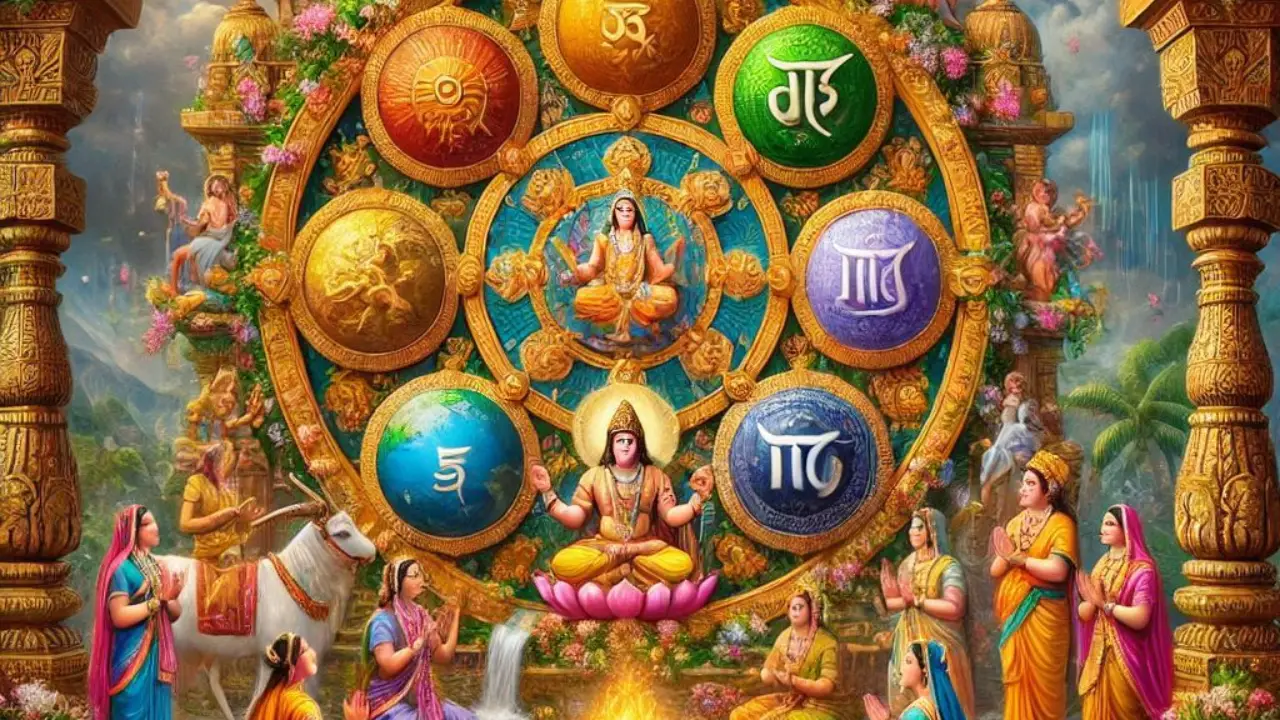Hindu temple worship is a deeply spiritual experience, connecting devotees to cosmic energies and divine blessings. Among the many facets of this tradition, the Navagrahas (nine planetary deities) hold a unique and vital place. These celestial bodies are not just astronomical entities; they embody powerful forces influencing human lives. Understanding the role of Navagrahas in Hindu temple worship rituals can help devotees align their spiritual and material paths.
Who Are the Navagrahas?
The Navagrahas consist of the Sun (Surya), Moon (Chandra), Mars (Mangal), Mercury (Budh), Jupiter (Guru), Venus (Shukra), Saturn (Shani), Rahu (North Lunar Node), and Ketu (South Lunar Node). Each graha represents distinct energies, influencing various aspects of life such as health, wealth, relationships, and spiritual growth.
For example, Surya governs vitality and authority, while Shani represents discipline and karmic lessons. Devotees worship these deities not out of fear but to balance their energies for a harmonious life.
The Role of Navagrahas in Hindu Temple Worship
Navagraha shrines are commonly found in Hindu temples, especially in South India. These shrines often feature idols or symbolic representations of the nine planets arranged in a specific pattern. Devotees circumambulate the shrine; a practice believed to neutralize negative influences and amplify positive ones.
The Cosmic Connection
Hindu philosophy considers human life deeply intertwined with cosmic forces. The Navagrahas serve as a bridge between the microcosm (individual life) and the macrocosm (the universe). By propitiating these planetary deities, devotees seek to harmonize their actions with universal laws.
Rituals and Practices
Each graha has its specific rituals, colors, mantras, and offerings. Here are some practices associated with the Navagrahas:
Surya (Sun): Devotees offer red flowers and water while chanting the Surya mantra to seek clarity and leadership qualities.
Chandra (Moon): White flowers and rice are offered to Chandra to enhance emotional balance and mental peace.
Shani (Saturn): Oil lamps and sesame seeds are offered to Shani to reduce hardships and build patience.
These rituals are not mere acts of devotion. They are tools to align oneself with the graha’s energy, enabling personal and spiritual growth.
Real-Life Relevance of Navagraha Worship
The influence of the Navagrahas is not restricted to mythology or philosophy. Many people attribute significant life changes to their practices involving these celestial forces.
Example 1: Balancing Energies
A family from Tamil Nadu shared how Navagraha worship helped them during a period of financial instability. By regularly offering prayers to Shukra (Venus), associated with wealth and luxury, they noticed gradual improvements in their circumstances.
Example 2: Overcoming Obstacles
A young professional struggling with career stagnation began visiting a Navagraha shrine dedicated to Guru (Jupiter). Alongside chanting mantras, he adopted the qualities of patience and optimism. Within months, he secured a long-awaited promotion.
Importance of Astrology in Navagraha Worship
Astrology plays a significant role in understanding the Navagrahas’ impact on individuals. A person’s horoscope often reveals planetary positions influencing their life. Navagraha worship can mitigate negative planetary influences highlighted in a horoscope.
For example, someone experiencing the difficult period of Shani Sade Sati (Saturn’s seven-and-a-half-year cycle) may find relief by chanting Shani mantras and lighting oil lamps on Saturdays.
Why Navagraha Worship Is Relevant Today
Modern life is rife with challenges—health concerns, career pressures, and relationship struggles. Navagrahas in Hindu temple worship offers a spiritual framework to address these issues holistically. Unlike quick fixes, it encourages devotees to embrace responsibility and cultivate virtues like discipline, resilience, and gratitude.
Practical Applications
Health: Chanting mantras for Surya can improve vitality.
Relationships: Worshiping Chandra fosters emotional harmony.
Career Growth: Seeking blessings from Shukra and Guru can enhance creativity and decision-making.
How to Begin Navagraha Worship
For those new to this practice, here are simple steps to get started:
Identify Key Grahas: Consult an astrologer to understand which planets are most influential in your life.
Visit a Temple: Find a temple with a Navagraha shrine and learn the rituals.
Set Intentions: Approach worship with a clear and positive mindset.
Recite Mantras: Use specific mantras for each graha to connect with their energies.
A Call to Explore Deeper
The Navagrahas teach us that life’s challenges and blessings are part of a greater cosmic design. Worshiping these celestial forces allows devotees to navigate life with wisdom and grace.
Have you ever experienced the power of Navagrahas in Hindu temple worship? Share your story or thoughts in the comments below! Your insights could inspire others on their spiritual journey.

